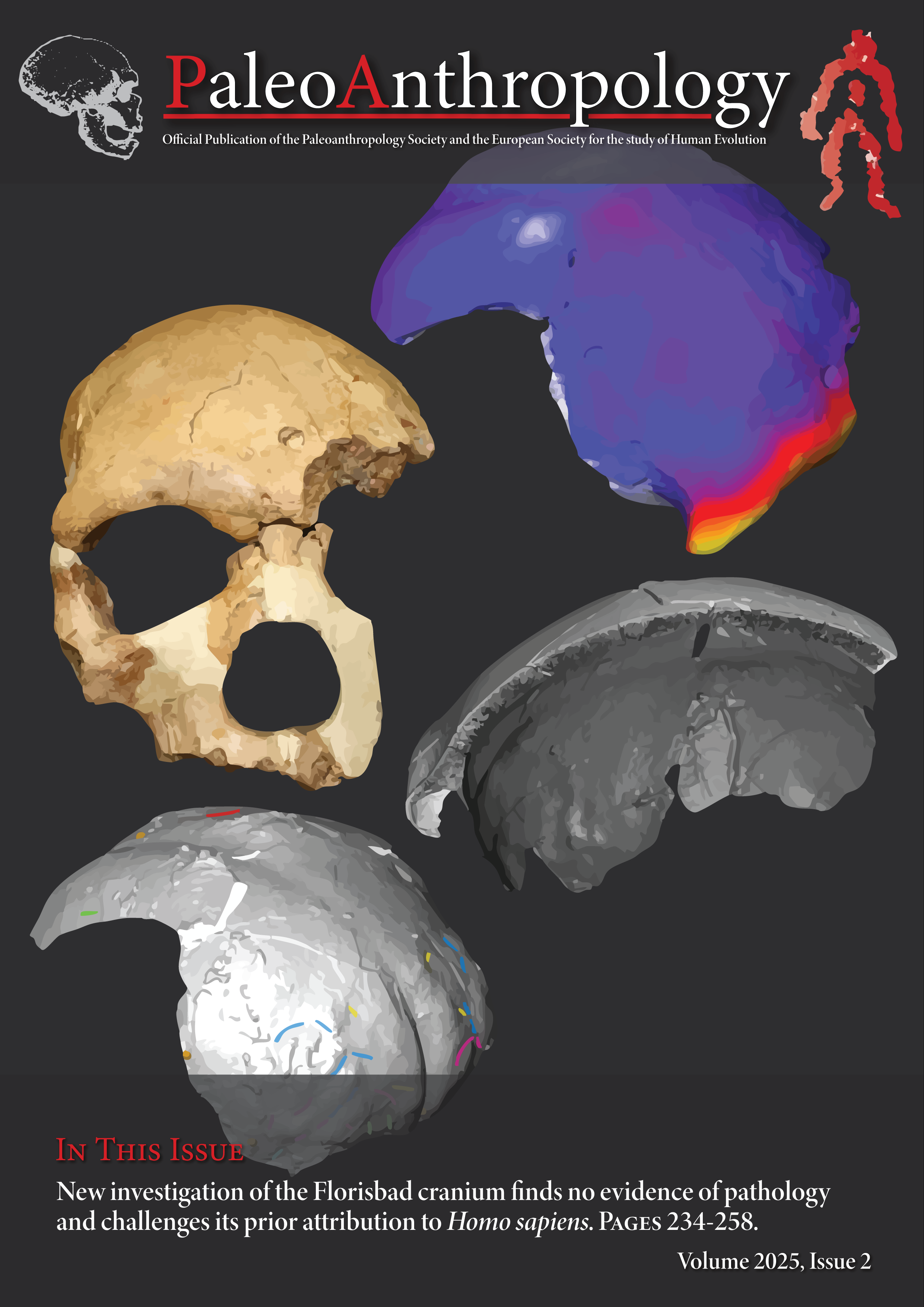Evaluating Hominin taxic Diversity in the African Middle Pleistocene With Evolutionary Quantitative Genetics Special Issue: What’s in a Name? Late Middle and Early Late Pleistocene Hominin Systematics
Main Article Content
Abstract
The Middle Pleistocene hominin fossil record is taxonomically diverse, with Homo sapiens, Homo neanderthalesis, Homo naledi, and Homo erectus, all existing at various times during this period. These species are generally recognized as valid, but there is also an ambiguous group consisting of individuals that are regionally, temporally, and morphologically variable and difficult to categorize. This ‘Muddle in the Middle’ has been at the heart of many debates in the palaeoanthropological literature, with the main disagreement centered on how many species this group consists of. This disagreement has been further exacerbated given the difficulty of defining species in the fossil record using existing species concepts. While this is a challenge, some species concepts do include predictions that can be tested. One of these is Van Valen’s Ecological Species Concept (ESC), which describes a species as a group that occupies an adaptive zone, with stabilizing selection acting to maintain its morphological stability.
In this study, an established approach derived from evolutionary quantitative genetics was used as a proof of concept to test whether the pattern of morphological variation among the crania of eight Middle Pleistocene hominin individuals from Africa (600-150 ka) is more consistent with diversifying selection, stabilizing selection, or genetic drift. Results show that the vast majority of comparisons indicate a pattern of stabilizing selection, which aligns with the definition of a species according to the ESC. Four comparisons involving the Bodo 1 cranium show possible evidence of diversifying selection, which may indicate some taxic diversity. In conclusion, most of the individuals in this study follow the expectation of a single ecological species lineage. This is the first study to use this approach for taxonomic purposes.

